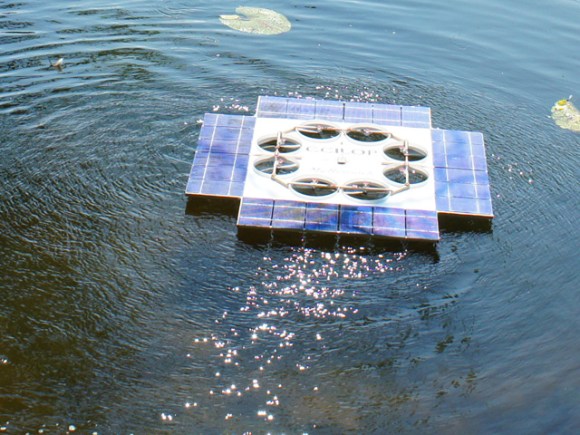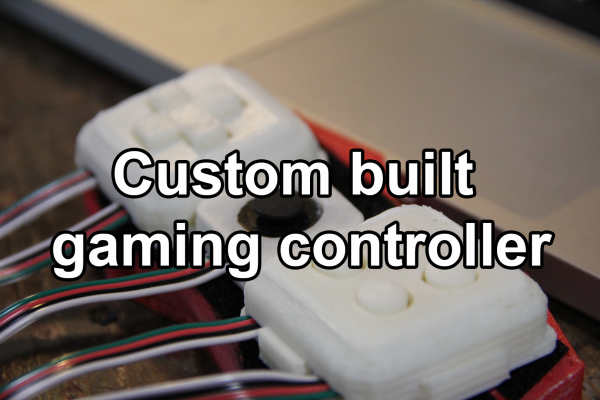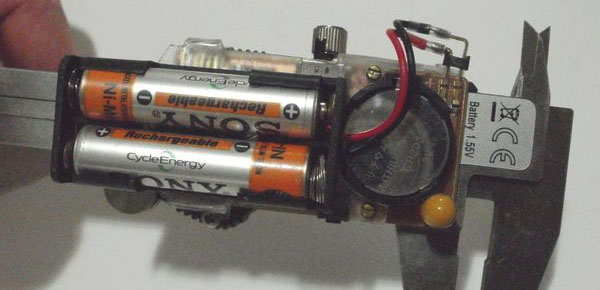
It looks a little bit like an octocopter, but this solar-powered hovercraft is distinctly different from its free-flying brethren. It depends mostly on ground effect for operation and to get it just a bit into the air you need a pretty large reflective rig nearby.
The vehicle needs to be even lighter than traditional quadcopters in order to function. It doesn’t carry any battery at all which presents a problem when trying to program the microcontroller board. For this it is connected to an external battery, which is removed before flight so that the control can be powered from the solar array.
What’s not shown in the image above is a mirror array used to focus more intense sunlight on the panels to bump up the available electricity. Not much is said about this, but there is one image on the project page which shows the creator standing in front of the set of four mirrors (perhaps sheets of mylar?) strung up between a couple of trees.
Alas, we couldn’t find a video of the aircraft in action. With such a delicate balsa wood frame we’re sure this thing is affected by every air current that passes its way.
[Thanks Laimonas]

















